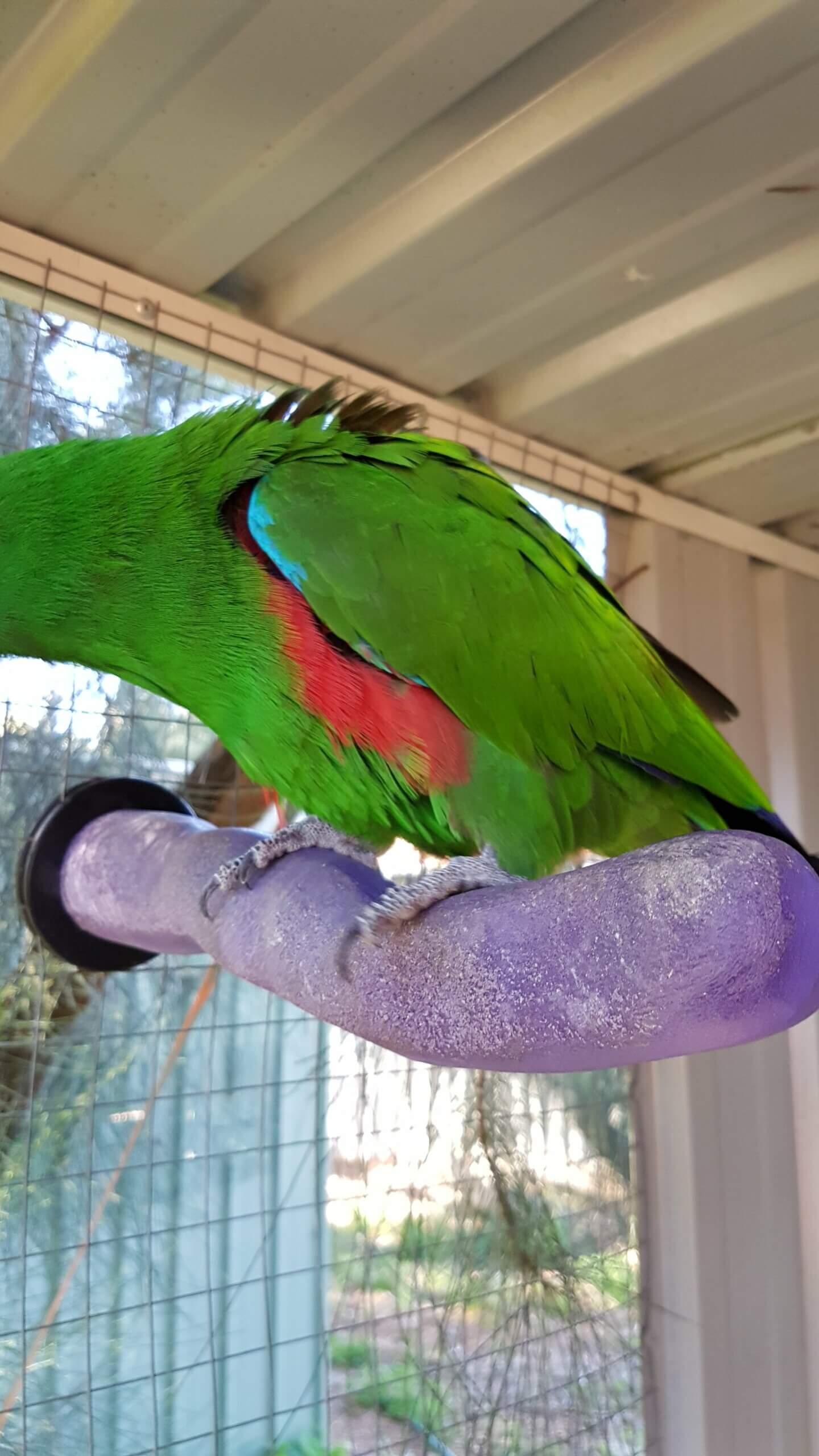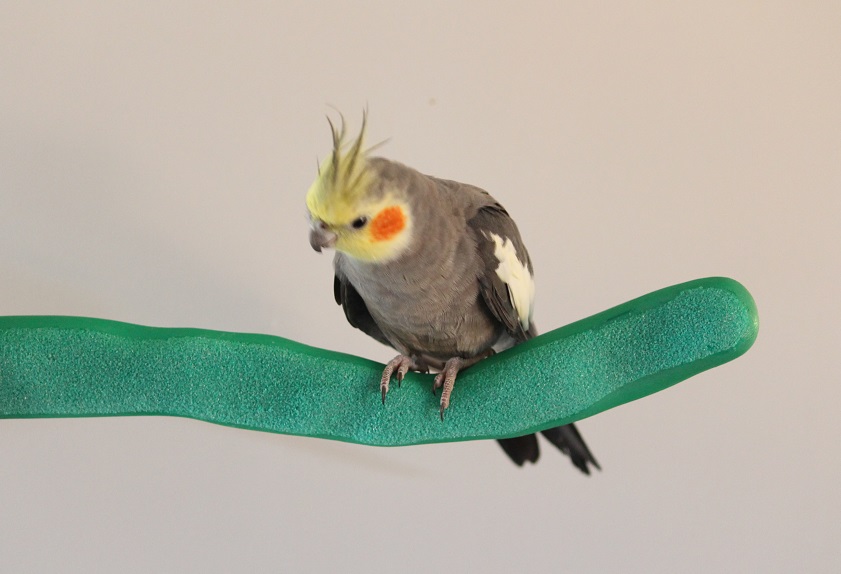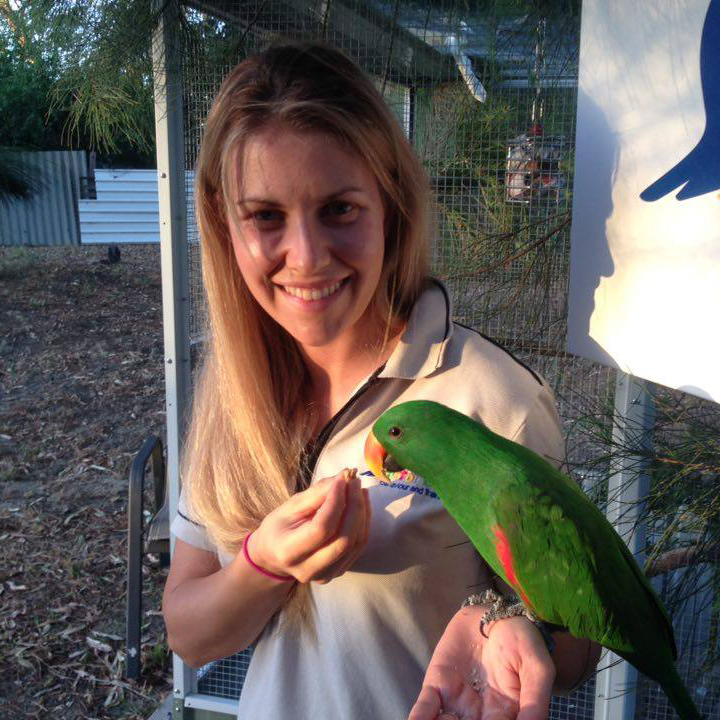Stationing: How to teach your bird
Stationing is a fantastic foundation behaviour to teach your parrot, and is incredibly useful for managing your bird’s behaviour and location. Simply put, stationing is teaching your parrot to move to a chosen point (your ‘station’) on cue. An easy example is teaching a dog to go “on the mat” on command. This is the same with parrots, but we usually use a favourite and obvious perch as the stationing spot. Once trained, you can ask you bird to station to manage behaviour – for example – you can move birds away from food bowls when changing them, move them away from aviary doors when entering and exiting, and teach them to put themselves inside their enclosure on cue using a station point. Stationing is also very useful for working with aggressive birds in a hands-off manner, and for asking birds to move away from items like furniture that they shouldn’t be chewing!

Step 1
The stationing perch may need to be desensitised if your parrot is fearful of new objects, so leave the perch in their sight but where they are not acting wary of fearful, and give the parrot a favourite treat. Once they are relaxed around the perch you can fix the location of your perch, and ask them to climb onto it by holding a favourite treat nearby. We recommend teaching a ‘come here’ cue and familiarising with a clicker or bridge marker prior to stationing training.
Step 2
Once the parrot has finished eating the treat while sitting on the perch for the first time, cue them (or lure with a treat in your hand) off the perch again, repeat this a couple of times until your parrot is comfortable climbing on and off for your ‘come here’ cue.
Step 3
Now when you are cueing/luring them onto the perch or station point use the phrase “station” or the word of your choosing (just stay clear and consistent), once they are up, bridge and reward. Cue them back off the perch. Repeat this stage until they are responding quickly, then begin phasing out the hand cue/lure and instead just use the verbal cues. The moment they climb up with just the verbal cue, bridge then reward heavily.
Step 4
Repeat until they are fluent, respond quickly and understand your verbal cue. Now you have a stationing behaviour on a verbal cue!
Step 5
You can now begin teaching them to station from different and more challenging locations – for example – build up the training to the stage where you can get them to fly across the room to their cage and climb inside to reach their station. As they get more fluent, reduce the volume of reward for advancements they have mastered, leave the jackpot (large) rewards for new advancements. You can also work on duration of time sitting on the station by rewarding every few seconds for waiting. Slowly increasing the expectation by teaching them to wait for longer durations for a treat. You can even have fun with training with multiple stations for different cues (i.e. use different colours for different stations), or different stations for different birds in the flock!

We highly recommend Safety Pumice Perches (on sale from the Parrot Life® Shop www.parrotlife.com.au/parrotlifeshop)
As your chosen station, as they are brightly coloured and stand out from other perches. And are incredibly durable and will help trim your parrots nails each time they station!
Article written by Rachel Riley of Parrot Life

